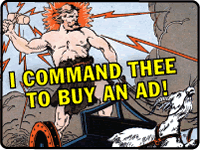Perhaps worse than Channel One are so-called “pouring rights” contracts. These allow major beverage companies like Coca Cola to buy the exclusive right to market their products in a school system. Schools have become littered with vending machines and posters telling kids to buy unhealthy products. One Colorado Springs superintendent even agreed to have his students meet a soda consumption quota of 70,000 cases a year. And then there’s guerrilla marketing. Companies hang outside of schools searching for “alpha kids” or trendsetters, and give them free stuff while hoping that other kids trying to be “cool” will look to their alpha peers for cues.
Small Targets
Those who work in the field of child marketing are probably some of the only people whose jobs involve kids that never ask themselves if what they are doing is actually good for children. If any of them did, they would have to come face to face with the undeniable evidence that these invasive marketing practices are most certainly not healthy. The most obvious example is the childhood obesity epidemic. With 25% of American children now overweight, obesity is soon predicted to outpace smoking as the leading cause of preventable deaths in the United States. It would be pretty hard to pretend that a certain clown named Ronald doesn’t have anything to do with this.
While being constantly told devouring junk food will make them happy, scantily-clad underweight models, unnaturally proportionate dolls and action figures, and sex-charged fashion magazines are giving kids highly skewed images of what it means to be beautiful. No wonder that bulimia and anorexia are becoming problems in elementary schools.
When 64% of sexually active teens name the media as their main source of information about sex, rather than friends, family, or teachers, what kind of image are they getting? There even seems to be more violence in programming for children than there is in programming for adults, and since kids spend more time with the media than any other activity besides sleeping, this has to have some kind of impact.
World Wrestling Entertainment matches (formally the WWF) are a favorite among 8-11 year olds and feature extreme violence coupled with the degrading treatment of women. George Bush has talking dolls made in his likeness, and the Army has its own videogame that can be downloaded for free, featuring realistic combat, desert landscapes and Arabic enemies.
“As we bombard our children with images, words, and sounds that leave nothing to be imagined, we are transforming them from creators to reactors.”
The very imaginations of children are under attack, as infants are now targeted by shows like Teletubbies, despite the fact that the American Academy of Pediatrics recommends that children under two don’t watch TV at all. Psychiatrist Susan Linn, in her book Consuming Kids, explains the situation: “As we bombard our children with images, words, and sounds that leave nothing to be imagined, we are transforming them from creators to reactors.”
Corporations would love to point at the parents and blame all of these problems on them. The truth is that they have billions of dollars that are used in very manipulative ways to convince kids that shopping leads to fulfillment, all while undermining attempts by parents to pass on positive values to their offspring. Somewhere the line has to be drawn and the tradition of storytelling returned to the realm of parenting. The alternative is a system of legalized brainwashing that is breeding a materialistic populace lacking any of the skills essential for the operation of a healthy democracy.
Joe Camel may be dead, but the practice of getting kids hooked on products young is flourishing. Today, more kids recognize the golden arches than the Christian cross, and “brand loyalty” can be established as early as age two. If our own childhoods are for sale, then where does it stop? The free market is like a computer program that we imbue with certain properties, and currently it is not programmed to have a conscience as it only understands things in terms of profit.
There is a battle ahead that starts with turning off the TV, and ends with a complete ban on child marketing.
Pages: 1 2





Brand Loyalty: Conditioned Responses « Re-Tox: The Happy Middle Path // Dec 3, 2009 at 12:47 pm
[…] read The Practice of Advertising by Adrian Mackay or a great article on advertising to children at http://www.thirdeyemag.com/nonfiction/essays/conditioned-response/ if you want lighter fare that helps drive the point home. What is important are the words I bolded […]